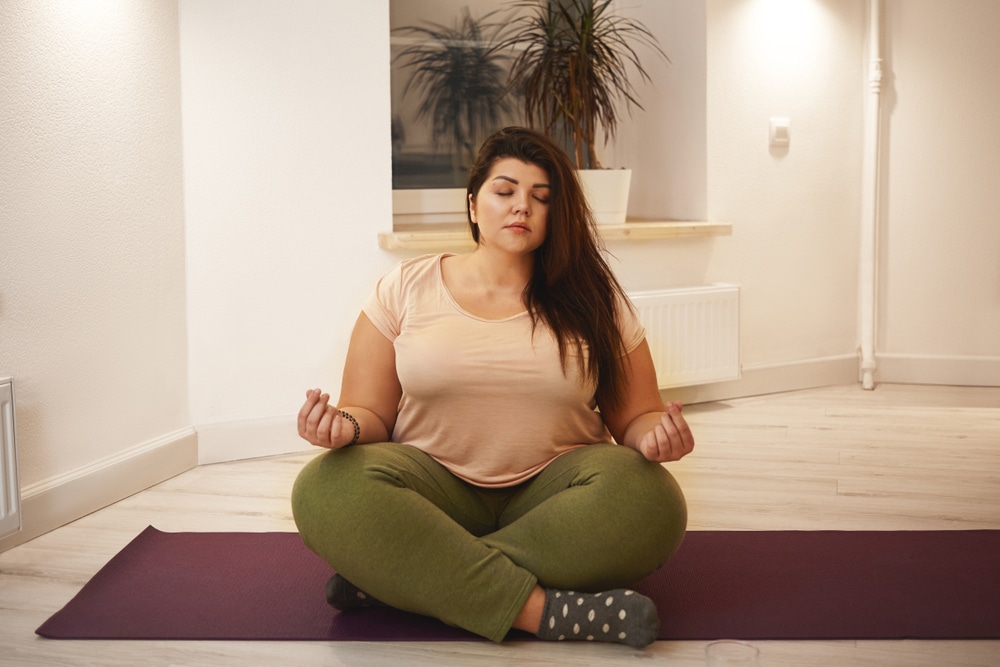Exercise is one of the most important activities for improving and maintaining our health, especially as we age. A lack of exercise can be attributed to many health issues, including weight gain, heart disease, and decreased mobility. Of course, starting and keeping up with an exercise regimen can be difficult, but consistency is key with lipedema exercise to combat lipedema.
Loss of muscle mass and mobility issues are common problems for women with lipedema. There’s no miracle cure; you have to want it, and you have to work at it. Fortunately, there are many lipedema exercises to perform at any level of fitness, and even modest lipedema exercise can have a significant benefit.
Benefits of Exercise
Exercising can help to activate the lymphatic drainage system in a patient’s limbs through the foot and calf muscle pump. Workouts that aren’t too strenuous help to move the excess fluids out of affected limbs, as well as reducing additional fat buildup.
The lymphatic system differs from the blood circulatory system in that it does not have a muscle “pump” to move fluids into the lymphatic system and eventually return back into circulation. Because of this, good lymph flow depends on proper joint and muscle activity. This is especially true if the lymphatic system is compromised. Individuals suffering from lipedema can receive a great benefit when engaging in diaphragmatic breathing exercises. These exercises are especially beneficial when they are combined together with other parts of a decongestive regimen.
Because fat disorders and lymphedema can often feed into one another, exercise is a great option to help combat both. With its dual purpose of clearing out excess lymph fluid and burning fat, exercise offers exactly what patients need to deal with these disorders.

Types of Lipedema Exercise
The best types of lipedema exercise to help treat lipedema and lymphedema are low-impact exercises and aren’t too strenuous, as strain can increase fatigue and pain levels. Low impact exercises help protect joints. Workouts should also focus on exercises that do not increase lactic acid build-up.
The types of exercise used should be focused on the individual patient’s needs and ability. Additionally, it is important to use compression garments when exercising whenever possible. Compression garments help to promote blood circulation and lymph fluid flow, which can be severely inhibited in patients who suffer from fat disorders and lymphedema.
Start with Simple Lipedema Exercises: Focus on Stretching
The start of the lymphatic system is the lymphatic capillaries. They are tiny vessels that are entering the lymphatic system. The opening of the capillaries is attached to anchoring filaments. During movement, stretching, or when there is increased fluid in the interstitial space of tissues [Swelling], the lymph capillary opens up. Further stretching at the lymph node with the gentle pressure on the lymph node capsule stimulates flow.
Shoulder Shrugs
- Stand or sit in a comfortable position.
- As you inhale, draw both shoulders up toward your ears and then exhale, releasing your shoulders to a neutral position.
- Repeat 10 times.
Neck Rotations
- While seated, inhale as you slowly turn your head to the right for a count of five.
- Pause for one second and then exhale, bringing your head back to center for a count of five.
- Repeat on the other side.
- Perform at least five repetitions on each side.
Hip Abductions
- Lie on your back with your arms alongside your body and your legs stretched out straight in front of you.
- Inhale, sliding your right leg along the floor and out to the side.
- Exhale while sliding the leg back to the center.
- Repeat on the left side.
- Perform at least five repetitions on each side.
Ankle Pumps
- Lie on your back with your legs and arms flat on the ground.
- Inhale and flex the ankle and exhale and extend the ankle 10 times, flexing and pointing the toe.
- Repeat on each side.
Bent Knee Fall Outs
- Lie on your back with your knees bent and feet flat on the floor.
- Slowly lower the right knee toward the floor by letting it fall open to the side.
- Slowly bring the leg back to the center and repeat on the other side.
- Perform five times on each side.
Water Exercise

High impact exercises, or activities that are too strenuous, may actually cause more harm than good for lipedema patients who are at increased risk for joint problems. That’s why water exercising is highly recommended; exercising in water creates a low-impact environment that helps individuals work out comfortably. Because water is much denser than air, it allows for a high level of energy expenditure without causing too much strain on the body. Also, the water density provides a dynamic compression as you move through it.
This dynamic compression on the limbs stimulates lymph circulation which makes water exercises particularly helpful for lipedema patients. Below is a list of water exercises you can perform, and the benefits that they provide.
Water Walking
Walking in a pool is one of the easiest exercises to perform, yet offers many benefits to those suffering from lipedema and lymphedema. In addition to the dynamic compression caused by the density of water, the water cools down a patient’s legs, stimulating blood and lymph fluid flow throughout. Water walking can help to strengthen the legs and improve their overall shape and tone as well. For a more advanced technique, the “Nordic walking” technique involves a full walking stride in the water, alternating arms and legs as if walking normally on land.
Traditional Swimming Strokes
Good for toning the whole body, front and backstroke swimming is a great exercise for lipedema patients. Increasing and/or maintaining muscle mass is very important for lymph circulation and overall mobility. Make sure you utilize both your arms and legs when swimming. A great bonus of swimming is that you can feel improvement directly as you start swimming faster and are able to complete more laps. Patients with lipedema in the legs should avoid breaststroke, as it can strain the knees and cause additional pain with its kicking motion.
Water Aerobics
Just like on dry land, but in the water! Aerobics exercises in the water reduce strain on joints, increase resistance, and provide a fun environment to interact with others. The social environment will provide a boost to your drive to succeed, as well as help to take your mind off of the exercise itself. Water exercises provide counter-buoyancy and stimulate lymphatic flow just as effectively as compression pumps. You can read more about the benefits of compression here.
Contact Your Physician First
Before starting an exercise program, it is always best to check with your doctor. They can help you make an exercise plan that is safe and that will help you manage and treat your symptoms, as well as provide other treatment options such as decongestive therapy. Contact us today for more information about exercise therapy for lipedema treatment.
Can Exercise Help with Lipedema Fat?
Unfortunately, lipedema fat is typically somewhat resistant to exercise; however, exercise is still an important part of maintaining a healthy lifestyle and may assist in losing non-lipedema fat from the body. Exercises such as the ones discussed above can aid in improving lymphatic flow and mobility and relieving joint strain.
